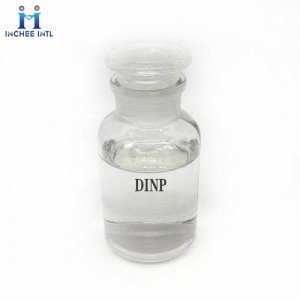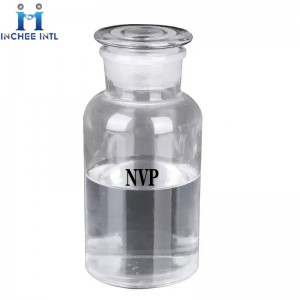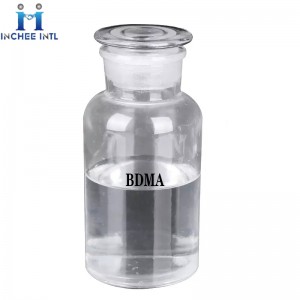-

Manufacturer Good Price DINP CAS:28553-12-0
DINP:Diabenate (DINP) is a transparent oily liquid with a mild odor. This product is a universal main -added plasticizer with excellent performance. This product and PVC are similar to that, even if they are used in large quantities; volatile, migration, and non -toxicity are better than DOP, which can give the product with good Chemicalbook light resistance, heat resistance, aging resistance and electrical insulation performance, excellent comprehensive performance, and excellent comprehensive performance DOP. Because the products produced by dihydrodinate of phthalate have good water resistance, low toxicity, aging resistance, and excellent electrical insulation, they are widely used in various soft and hard -hard plastic products, toy film, wires, and cables.
CAS: 28553-12-0
-

Manufacturer Good Price Methylene Chloride CAS:75-09-2
Methylene Chloride is a compound generated by two hydrogen atoms in methane molecules, and molecular CH2CL2.Methylene Chloride is colorless, transparent, heavier, and volatile liquid. It has a smell and sweetness similar to ether. It does not burn. Methylene Chloride is slightly soluble in water, and it dissolves with most commonly used organic solvents. It can also be dissolved in any proportion with other chlorine-containing solvents, ether, ethanol, and N-di metamimamamide. Methylene Chloride is difficult to dissolve in liquid ammonia at room temperature, which can be quickly dissolved in phenol, aldehyde, ketone, triathrin, tororine, cycamine, acetylcetate. The phase Chemicalbook is 1.3266 (20/4 ° C). The melting point -95.1 ° C. Boiling point 40 ° C. Fully low -boiling point solvents are often used to replace flammable petroleum ether, ether, etc., and can be used as local anesthesia, refrigerant and fire extinguishing agent. The spontaneous combustion point is 640 ° C. Decoction (20 ° C) 0.43MPa · s. The refractive index nd (20 ° C) 1.4244. Critical temperature is 237 ° C, and critical pressure is 6.0795MPa. HCL and traces of light are generated after thermal solution, and the water is heated for a long time to generate formaldehyde and HCL. Further chloride, CHCL3 and CCL4 can be obtained.
CAS: 75-09-2
-

Manufacturer Good Price Alpha Methyl Styrene CAS 98-83-9
2-Phenyl-1-propene, also known as Alpha Methyl Styrene (abbreviated as a-MS or AMS) or phenylisopropene, is a by-product of the production of phenol and acetone by the cumene method, generally a by-product of phenol per ton 0.045t α-MS.Alpha Methyl Styren is a colorless liquid with a pungent odor. The molecule contains a benzene ring and an alkenyl substituent on the benzene ring.Alpha Methyl Styren is prone to polymerization when heated. Alpha Methyl Styren can be used in the production of coatings, plasticizers, and as a solvent in organic.
Alpha Methyl Styrene is a colorless liquid. Insoluble in water and less dense than water. Flash point 115°F. May be mildly toxic by ingestion, inhalation and skin absorption. Vapors may be narcotic by inhalation. Used as a solvent and to make other chemicals.
CAS: 98-83-9
-

Manufacturer Good Price N-VINYL PYRROLIDONE (NVP) CAS 88-12-0
N-VINYL PYRROLIDONE (N-Vinyl-2-pyrrolidone) is referred to as NVP, also known as 1-vinyl-2-pyrrolidone, N-VINYL PYRROLIDONE. N-VINYL PYRROLIDONE is a colorless or light yellow transparent liquid with slight odor at room temperature, easily soluble in Chemicalbook water and other organic solvents. Because N-vinylpyrrolidone can increase various physical and chemical properties of products.N-VINYL PYRROLIDONE is widely used: in radiation medicine, wood floor industry, paper or cardboard industry, packaging materials, screen ink industry, the use of NVP improves the physical properties of products.
N-VINYL PYRROLIDONE (NVP) is commonly used as a reactive diluent for radiation curing in UV-coating, UV-inks, and UV adhesives. It is used as a monomer to produce water soluble polyvinylpyrrolidone (PVP) with uses in pharmaceuticals, oil field, cosmetics, food additives & adhesives. It is used in the manufacture of copolymers with, for example, acrylic acid, acrylates, vinyl acetate and acrylonitrile and in the synthesis of phenolic resins.
CAS: 88-12-0
-

Manufacturer Good Price P-TOLUENESULFONYLISOCYANATE (PTSI) CAS 4083-64-1
P-TOLUENESULFONYLISOCYANATE (PTSI) is a single functional isocyanate. P-TOLUENESULFONYLISOCYANATE (PTSI) has high activity and can react with conventional diisocyanates, such as TDI and HDI, with water in polyols and solvents. The resulting carbamate does not increase the viscosity of the system. The disadvantage is that the toxicity of oxazolidine and other dehydrants is large; P-TOLUENESULFONYLISOCYANATE (PTSI) reacts with water to produce carbon dioxide and toluenesulfamide, so P-TOLUENESULFONYLISOCYANATE (PTSI) cannot be used directly in paint formulations and is generally used for pre-dehydration. To remove 1g of water in the solvent, about 12g of PTSI is theoretically required, but the actual amount should be higher than this.
CAS: 4083-64-1
-

Manufacturer Good Price Dimethylbenzylamine (BDMA) CAS:103-83-3
Dimethylbenzylamine (BDMA) is a colorless to light yellow liquid with an aromatic odor. Slightly less dense than water and slightly soluble in water. Flash point approximately 140°F. Corrosive to skin, eyes and mucous membranes. Slightly toxic by ingestion, skin absorption and inhalation. Used in the manufacture of adhesives and other chemicals.
CAS:103-83-3






